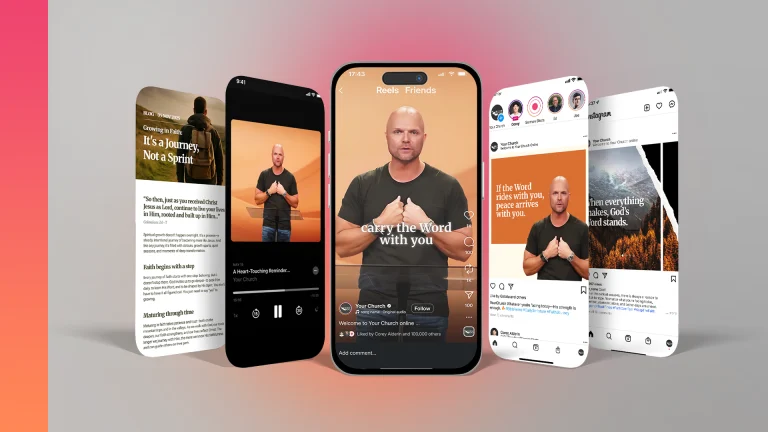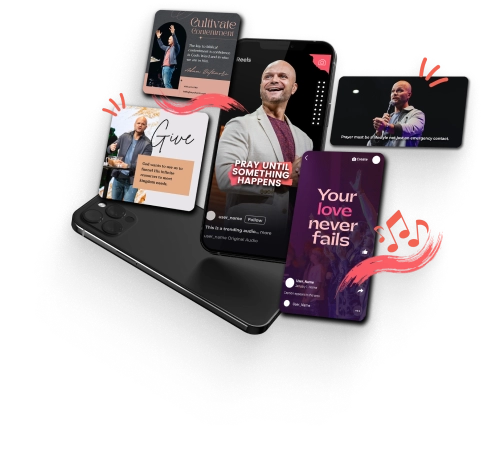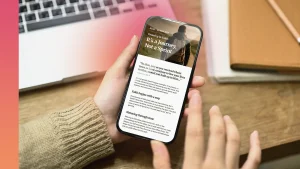It’s true that “a picture is worth a thousand words.” Visuals are able to spark emotion and grab people’s attention. When it comes to sermons, having visuals throughout your message isn’t something that’s “nice to have,” but rather vital. Visuals make your message more memorable and hold folks’ attention. Below, we’ll discuss the psychology of images in relation to sermon engagement and how they can help pastors create messages that stick in the mind and move the heart.
1. Brains Love Images
Science tells us our brains are wired to process visuals much easier and faster than text. In fact, a study done by 3M showed the human brain processes images 60,000 times faster than words. This means that when your congregation sees a powerful image during your sermon, it leaves a deeper and quicker impact.
Visuals activate both the emotional and rational parts of the brain. In the end, visuals allow folks to remember your message long after the service ends.
When used effectively, sermon visuals can:
- Reinforce key points in your message.
- Evoke emotional responses.
- Help visual learners connect more deeply to your message.
2. Visuals Strengthen Both Memory and Retention
Have you ever wondered why people tend to remember a video or clip they watched? According to Medium, people remember 10% of what they hear, 20% of what they read, and 80% of what they see.
When you pair your sermon with the right images, like illustrations, slides, or video clips, your message is bound to make a lasting impact.
Consider using:
- A relevant photo that really highlights your sermon’s theme.
- Simple sermon slides with the Scripture you use in your message.
- Background imagery during worship.
3. Visuals Stir Emotion and Connection
Faith is incredibly emotional, and visuals are one of the most effective ways to stir those emotions in your congregation.
A well-chosen image can:
- Set the tone of your sermon before you even speak.
- Build empathy, connection, and reflection in your audience.
- Make complex messages easier for your audience to understand.
4. Visuals Can Help Keep Modern Audiences More Engaged
We live in a visual age. From Instagram reels to YouTube shorts, people are more drawn to what they can see, rather than what they hear. According to Content Whale, Posts with visuals receive 94% more views than those without. This just shows how much more visuals have an impact on people.
When your sermon includes visuals that resonate with your audience, you’re not just preaching, you’re connecting too.
5. How to Use Visuals in Sermons
It’s not just about adding visuals — it’s about using them wisely. Using just any random image won’t bring the result you’re looking for. Here are a few tips to create more impactful, memorable sermons:
- Be intentional: Every image should either reinforce your message or have a purpose.
- Keep it simple: Avoid messy slides. That can have the opposite effect and become more distracting than anything.
- Pay attention to how your audience responds: Find out what visuals resonate most with your congregation.
Final Thoughts
With sermons, how you present your message can be just as important as the message itself. Visuals help make sermons more impactful, memorable, and emotional.
This is why tools like Sermon Shots exist — to make it easy for pastors and media teams to create professional sermon visuals and short clips that boost engagement. Sermon Shots helps bring your message to life visually, so that every sermon connects deeper, lasts longer, and reaches farther.
FAQs: The Psychology of Visuals in Sermons
Q: Why do visuals help people remember sermons better?
A: The brain processes and stores visual information faster and more deeply than text. Visuals help folks retain information better.
Q: What types of visuals work best for sermons?
A: Scripture slides, images that reflect the themes of your sermon, or short clips.
Q: How can I make sure visuals don’t distract from the message?
A: Use consistent colors, keep the visuals simple, and ensure each image is relevant.
Q. Can visuals help visual learners?
A: Definitely! Visuals are effective for both visual and auditory learners.





